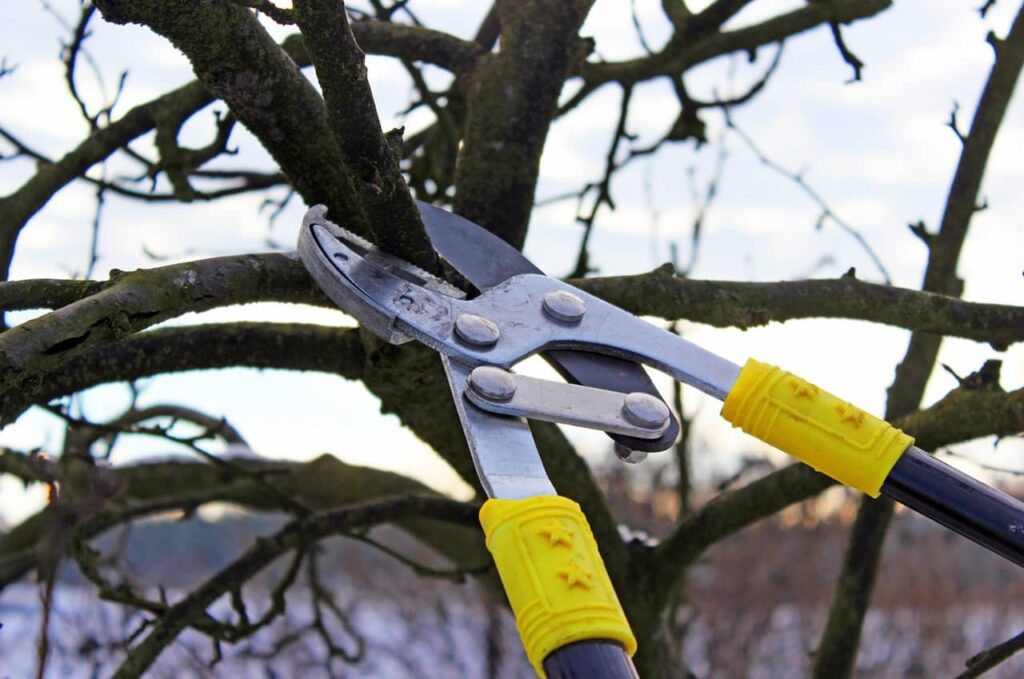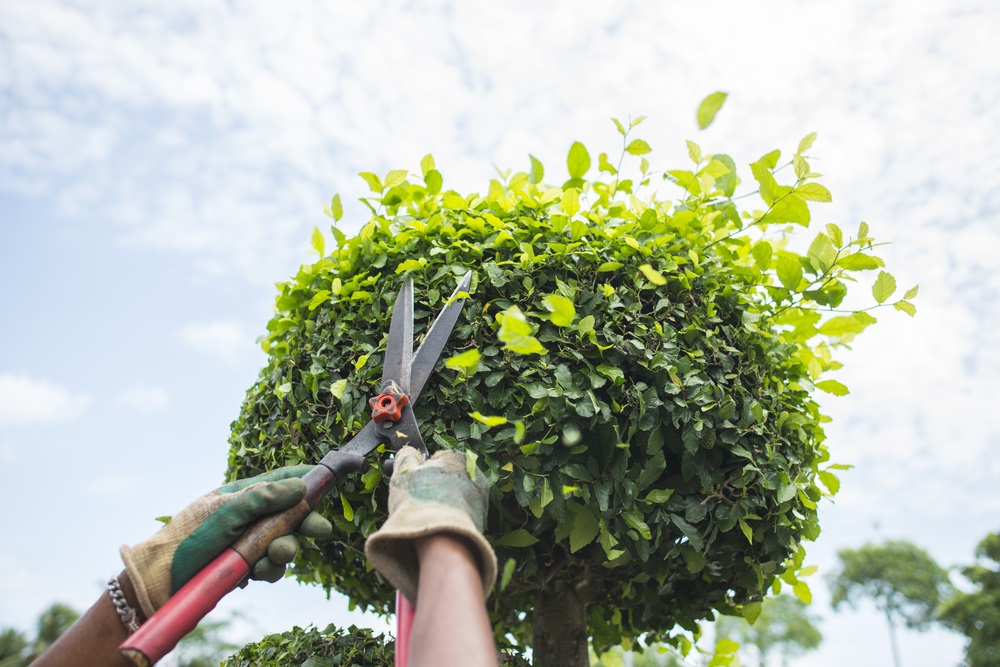Many homeowners in Sydney take great pride in their gardens. A well-maintained garden can create a tranquil and inviting atmosphere, and one way to enhance the beauty of your garden is through professional tree pruning services. Tree pruning is an essential part of garden care that not only improves the aesthetics but also promotes the health and longevity of your trees.
Understanding the Importance of Tree Pruning
Tree pruning Sydney involves the careful removal of branches and stems to shape the tree, remove diseased or damaged parts, and improve the overall structure. It is not just a simple aesthetic practice – it is a science-backed technique that arborists use to maintain the health and vitality of trees.
The Science Behind Tree Pruning
Tree pruning is based on the biology and physiology of trees. By selectively removing branches, arborists can stimulate new growth, control the size of the tree, and distribute sunlight and nutrients to the remaining branches. It also helps in preventing diseases, insect infestations, and structural problems. You can visit https://sustainable-gardening-tips.com/tree-pruning-near-me-how-to-maintain-healthy-trees-all-year-round to get how to maintain healthy trees all year round.
Benefits of Regular Tree Pruning
The benefits of regular tree pruning are numerous. First and foremost, it helps in maintaining the overall health of the tree by removing diseased or dead branches. Pruning also promotes better air circulation and reduces the risk of storm damage by improving the tree’s structural stability. Moreover, it enhances the tree’s appearance, making it an appealing feature of your garden.
Another significant benefit of tree pruning is that it can increase the fruit or flower production of certain tree species. By removing excess branches and buds, the tree can redirect its energy towards producing more flowers or fruits, resulting in a more bountiful harvest. Additionally, regular pruning can help shape the tree in a way that encourages a stronger and more robust growth pattern, leading to a healthier and more resilient tree in the long run.
It is important to note that tree pruning should be done with care and precision to avoid causing harm to the tree. Improper pruning techniques or over-pruning can weaken the tree, making it more susceptible to diseases and environmental stressors. Therefore, it is recommended to consult with a professional arborist to determine the best pruning practices for your specific tree species and ensure its long-term health and vitality.
Identifying the Right Time for Tree Pruning
To maximize the benefits of tree pruning, it is crucial to know when to perform this task. Pruning at the right time ensures the tree’s optimal growth and minimizes the risk of stress or damage.
Tree pruning is not just about cutting branches; it is a delicate process that requires careful timing and consideration. By understanding the seasonal nuances and signs indicating the need for pruning, you can help your trees thrive and maintain their health and beauty for years to come.
Seasonal Considerations for Tree Pruning
The ideal time for pruning depends on the tree species and the goals of pruning. In general, pruning during the dormant season, such as late winter or early spring, is recommended. During this time, trees are less susceptible to diseases and pests, and the wounds can heal quickly.
However, some tree species may require different pruning schedules. For example, spring-flowering trees should be pruned right after they bloom to avoid cutting off next year’s flower buds. On the other hand, summer-flowering trees can be pruned in late winter or early spring before new growth begins.
Signs Your Tree Needs Pruning
Aside from considering the season, it is important to be aware of signs that indicate your tree needs pruning. These signs include dead or decaying branches, overgrown branches, branches crossing or rubbing against each other, and branches interfering with nearby structures or power lines.
Regularly inspecting your trees for these signs can help you address issues promptly and prevent potential hazards. Proper pruning not only enhances the aesthetics of your landscape but also promotes the overall health and longevity of your trees.
Choosing Expert Tree Pruning Services
When it comes to tree pruning, it is vital to engage the services of professionals who have the knowledge, skills, and experience to handle the task effectively.
Tree pruning is not just about aesthetics; it plays a crucial role in the overall health and growth of the tree. Proper pruning can promote better air circulation, sunlight exposure, and structural integrity. It can also help prevent disease and pest infestations, ultimately prolonging the life of the tree.

What to Look for in a Tree Pruning Service
When selecting a tree pruning service, consider their qualifications and credentials. Look for certified arborists who adhere to industry standards and have a good reputation for their work. Additionally, ensure that they have liability insurance to protect you and your property in case of any mishaps.
Furthermore, it is essential to inquire about the pruning methods they use. Sustainable practices such as selective pruning and crown thinning should be preferred over indiscriminate cutting. A reputable tree pruning service will take the time to assess the tree’s condition and tailor their approach to ensure optimal results.
Why Professional Pruning Matters
Professional tree pruning goes beyond just cutting branches haphazardly. Trained arborists understand the science behind pruning and employ proper techniques to ensure the tree’s health and longevity. They have the right tools and equipment to execute precise cuts without causing harm to the tree.
Moreover, professional arborists can provide valuable insights into tree care and maintenance. They can identify potential issues such as weak branches, fungal infections, or structural weaknesses that may not be apparent to the untrained eye. By addressing these issues proactively, they can help prevent costly problems in the future and promote the overall well-being of the tree.
The Process of Professional Tree Pruning
Professional tree pruning involves a systematic approach to achieve the desired results while minimizing any negative impact on the tree. It is not just about cutting branches but rather a careful and strategic process that aims to enhance the tree’s health, aesthetics, and structural integrity.
Tree pruning is a vital aspect of tree care that should be carried out by trained professionals to ensure the best possible outcomes for the tree and its surroundings. Proper pruning can help prevent diseases, improve air circulation, and promote new growth, ultimately prolonging the tree’s lifespan.
Initial Assessment and Planning
Before pruning, an arborist will assess the tree’s overall health, structure, and growth pattern. They will determine the appropriate pruning methods based on the tree species and its specific needs. This assessment ensures that the pruning is tailored to achieve the desired outcome. The arborist will also consider factors such as the tree’s age, location, and any environmental stressors that may impact its growth.

Execution of Pruning Techniques
Once the assessment and planning are complete, the arborist will proceed with the actual pruning. They will carefully remove the selected branches, making clean cuts that promote quick healing. The techniques used may include crown thinning, crown reduction, and crown raising, depending on the tree’s requirements. It is essential to follow proper pruning practices to avoid causing harm to the tree, such as leaving behind stubs or making improper cuts that can lead to decay.
Maintaining Your Garden Post-Pruning
After your trees have been professionally pruned, it is important to take appropriate measures to maintain their health and appearance.
Tree pruning is a crucial aspect of tree care that helps promote healthy growth, improve tree structure, and enhance overall aesthetics. Proper pruning techniques not only benefit the tree’s health but also contribute to the safety of your property by removing dead or weak branches that could pose a risk during storms or high winds.
Aftercare Tips for Pruned Trees
After pruning, it is essential to apply tree wound dressings to protect the cut branches from diseases and pests. Regularly watering the trees, especially during dry spells, will help them recover and promote new growth. It is also beneficial to mulch around the tree base to retain moisture and inhibit weed growth.
Additionally, monitoring the pruned trees for any signs of stress or disease is crucial. Look out for discoloration, unusual growth patterns, or pest infestations, and address any issues promptly to ensure the continued health of your trees.
Regular Maintenance for Garden Enhancement
Beyond tree pruning, maintaining a beautiful garden requires consistent care and attention. Regularly inspecting the trees for signs of disease or pests, ensuring proper fertilization, and regular weed control are all essential for the overall health and aesthetics of your garden.
Furthermore, incorporating diverse plant species in your garden can enhance biodiversity, attract beneficial insects, and create a more resilient ecosystem. Consider planting native species that are well-suited to your region’s climate and soil conditions to reduce the need for excessive watering, fertilization, or pest control.
Enhancing your garden through expert tree pruning services not only enhances the visual appeal but also ensures the long-term health and vitality of your trees. By understanding the importance of tree pruning, identifying the right time for pruning, and engaging the services of professionals, you can enjoy a garden that is both visually stunning and environmentally sustainable.
